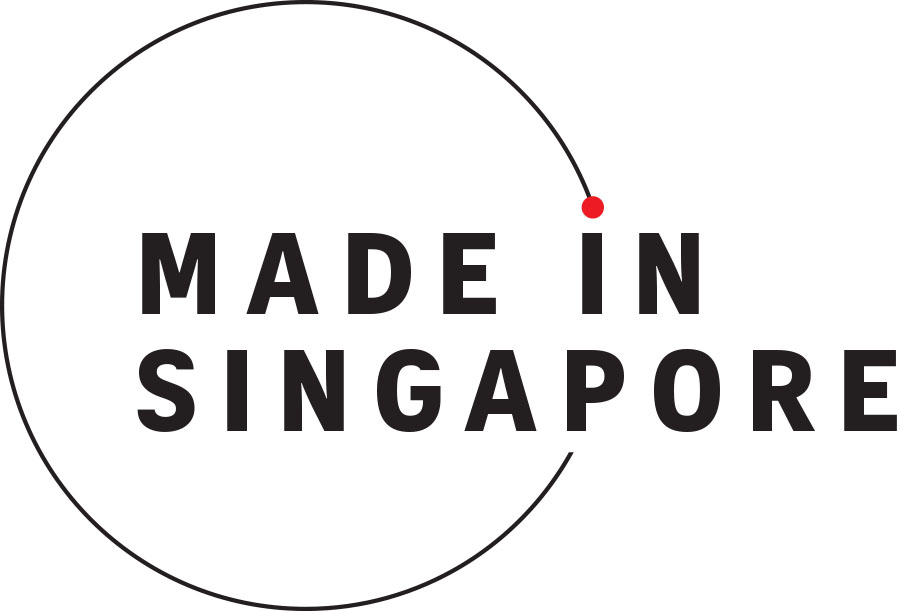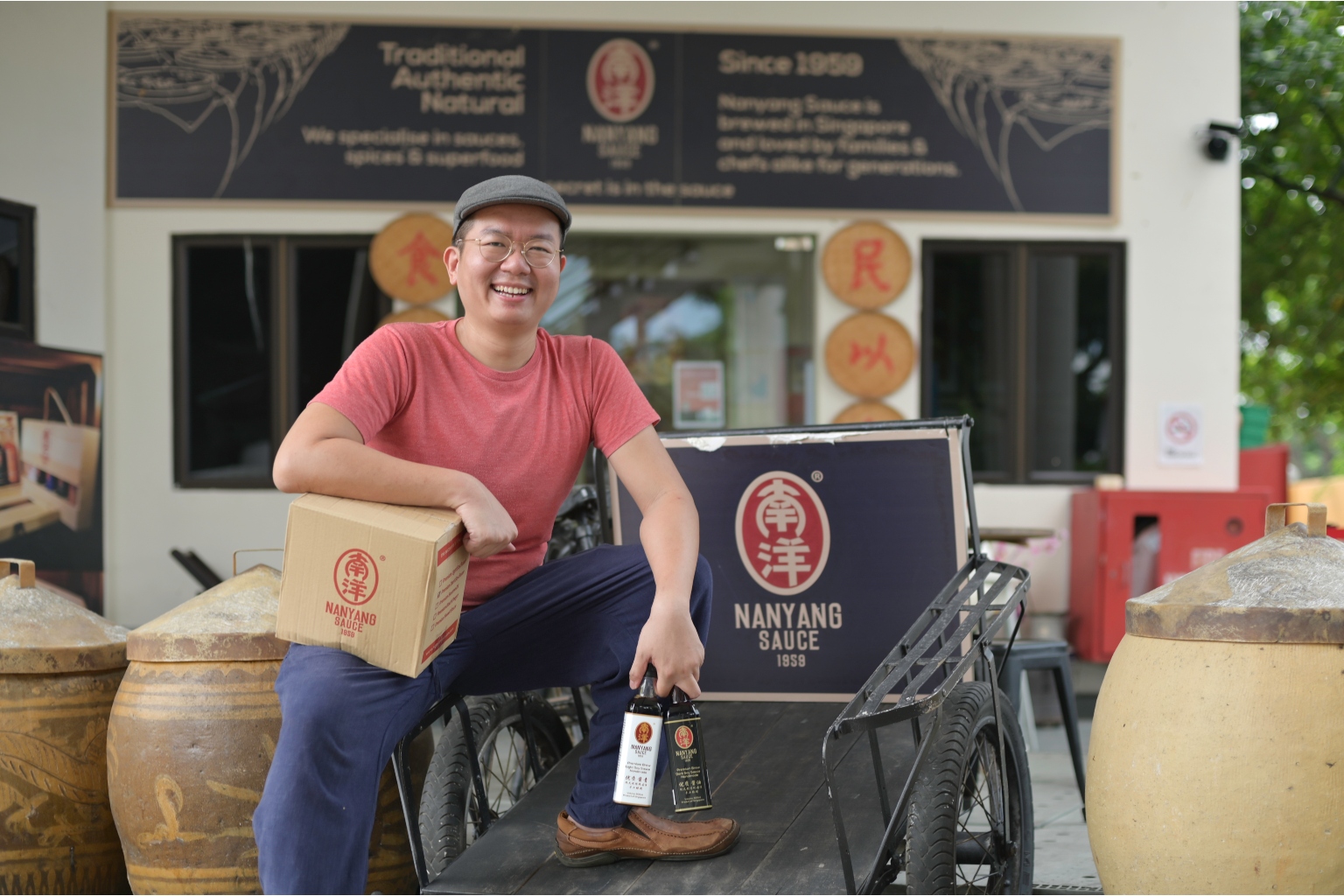Brewing new business ideas with age-old soya sauce recipe
Sign up now: Get ST's newsletters delivered to your inbox
Third-generation soya sauce maker Ken Koh hopes to fulfil his grandfather's dream to make the best soya sauce in the world.
Follow topic:
During the circuit breaker period, Nanyang Sauce owner Ken Koh did the food deliveries himself.
The sudden shutdown hit his food and beverage business hard because he had Malaysian workers who were stuck on the other side of the Causeway.
Over a drink at his shop in South Bridge Road, the 36-year-old says simply: "If we want to survive, we have to take the load."
Food retail is not even his core business. He started an eatery, which sells braised chicken, as a way of showcasing his family's handmade soya sauces and he has learnt some hard lessons along the way.
The first iteration of Nanyang Chicken was in a shophouse and he admits: "The space was a little too big for us to handle."
His current shop is literally a hole-in-the-wall with just enough space for a tiny kitchen dispensing braised and curry chicken, a counter with two socially distanced high seats, and three tables on an outside walkway.
His determination to keep his family's business alive is palpable as he talks about the traditional way his company still brews soya sauce. While commercial soya sauce is made the quick way with hydrochloric acid and vegetable protein, Nanyang Sauce mixes non-GMO soya beans with wheat flour and aspergillus mould before the mixture is fermented naturally under the sun in giant vats.
Mr Koh relates with pride how, when he visited a 250-year-old soya sauce factory in Japan, its 72-year-old soya sauce master was shocked when Mr Koh shared a video of the way Nanyang Sauce makes its sauce. "He said, 'This is how I used to make sauce as a 16-year-old.'"
Modern automated processes use defatted soya beans because fat can jam up the machines. At Nanyang Sauce, workers still mix whole soya beans by hand before decanting them into vats for the nine-month fermentation process.

Mr Koh stepped in to take over the business three years ago because "nobody wanted to take over". He grew up in the factory, playing among the soya sauce vats and rearing chickens and fish, before going on to study business at Singapore Management University.
His mother has helped out at the factory since she was 16, and his 94-year-old grandmother still goes to work there. His grandfather died at work from a heart attack when Mr Koh was 12 years old, so he feels a deep attachment to the business where three generations have lived and worked.
It was a typical small family enterprise set-up with no marketing department, he recalls wryly.
"Nobody knew about us. When we first came out, people were asking, 'Are you fake?'" he says.
His solution was to go to the Intellectual Property Office of Singapore to unearth the 1962 stamp registered to the company to prove its provenance. Part of the reason Nanyang Sauce was so under the radar was because it supplied mainly to old-school grocery stores and hawker stalls and many of those businesses were closing.
Mr Koh found new ways to promote the soya sauces.
A Hong Kong customer who walked into his East Coast sauce boutique one day to ask for soya sauce salt helped him raise funds for new equipment for the factory.
Mr Koh had no idea the salt crystals left over in his soya sauce vats were worth anything. "If he told me it was worth $1, I would have sold it for $1."
Instead, the salt, aged 10 years, was the centrepiece of a Kickstarter campaign which helped him raise more than $70,000. There are still limited jars, which are sold in a gift box priced at $68 each.
"Gifting is big for us. It's a blue ocean," says Mr Koh. He declines to reveal the privately owned company's annual turnover, saying modestly: "It's so small, people will laugh at us."
He jokes that he does not drive a Rolls-Royce, but a Volkswagen Polo. "We are poor, but we take pride in what we do."

Mr Ken Koh (above), owner of Nanyang Sauce, took over the family business three years ago. He believes that the company’s artisanal roots – with workers still mixing whole soya beans by hand – give its products an edge among younger and more health- conscious consumers.
ST PHOTO: ASHLEIGH SIM
He sees potential for growth, given current trends in Singapore and the world. Younger foodies, he notes, are far more health-conscious and aware of the provenance of the food products they consume, so his company's artisanal roots give its products an edge.
The by-product of the sauce-making process has also offered an unexpected revenue stream. The lees, similar to okara, which the company once sold to pig farmers, now goes to companies hoping to make the next meat substitute.
Mr Koh is brimming with ideas for the sauces too. While he is intent on keeping the old-school labels, he is using his shop as an "R&D" outlet to test new products. He has a soya sauce ice cream, which will be introduced in a 100ml-cup offering at the end of the year. Another product, a soya sauce cake, will also be launched soon.
He is also hoping to expand his factory and that the Government's push to increase local food production will help his company grow in the coming years.
He is realistic about the changes that will be necessary to keep the business relevant in the modern age. "You can make a very good quality product, but you also need to make it financially viable."
But his family's history and heritage mean he will try his best to keep it alive. "This is tribal knowledge. Once it's gone, it's gone."

